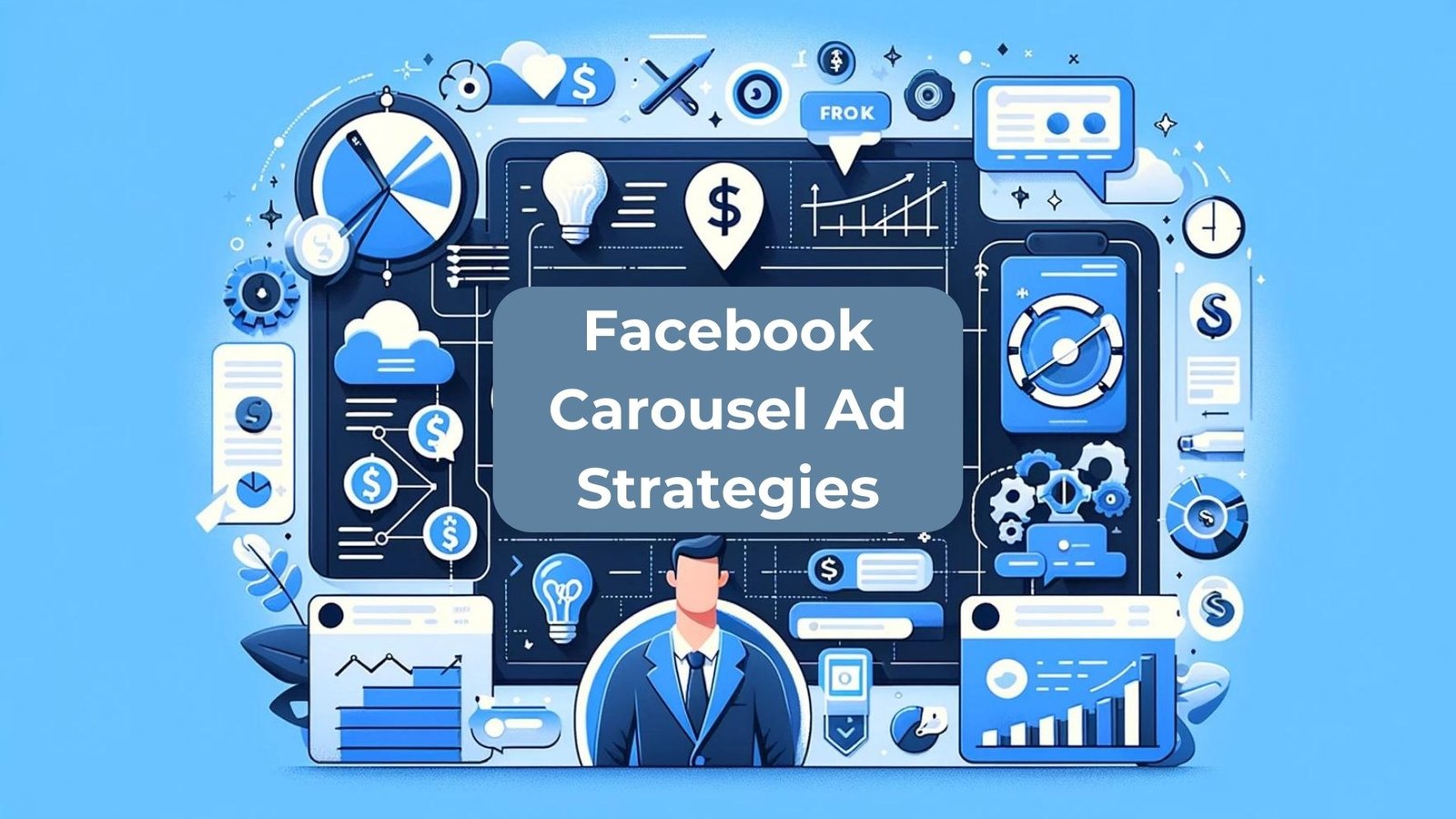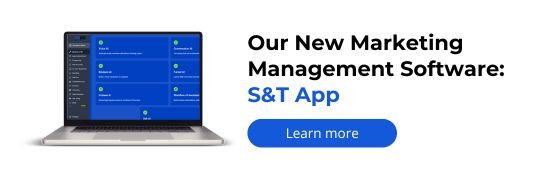Struggling to capture more leads for your Shopify store? Discover the transformative power of Facebook Carousel Ad Strategies.
Facebook Carousel Ad Strategies offer Shopify store owners an unparalleled opportunity to showcase their products. It will also narrate compelling stories, and deeply engage their target audience.
These ads allow you to showcase up to 10 images or videos within a single ad unit. Each with its own link, making them ideal for displaying multiple products, highlighting different features, or telling a compelling brand story.
This versatility not only engages users but also provides them with a richer understanding of what your Shopify store offers.
In 2024, the digital marketing landscape is expected to evolve rapidly, with new technologies and consumer behaviors shaping effective strategies.
Here are some futuristic and unique Facebook Carousel Ad Strategies tailored for Shopify stores looking to stay ahead:
#1. Leverage Augmented Reality (AR) Showcases
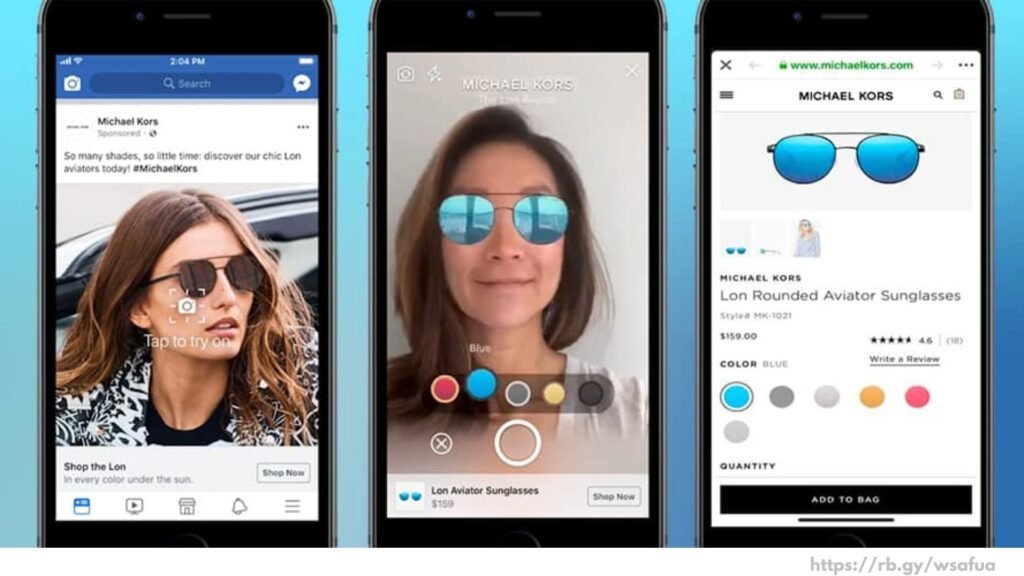
Strategy: Integrate AR into Carousel ads, allowing users to virtually try products through their camera interface. This immersive experience can significantly enhance product appeal and user engagement.
Implementation: Collaborate with AR developers to create interactive models of your products. Each Carousel card could feature a different product, inviting users to experience it in their space.
Futuristic Impact: AR integration could increase conversion rates by providing a ‘try before you buy’ experience, reducing the uncertainty associated with online shopping.
Example: IKEA could enhance its Facebook Carousel ads by incorporating AR, allowing customers to visualize how furniture fits in their space directly from the Carousel interface. This would potentially increase their confidence in purchasing online.
#2. AI-Powered Personalization
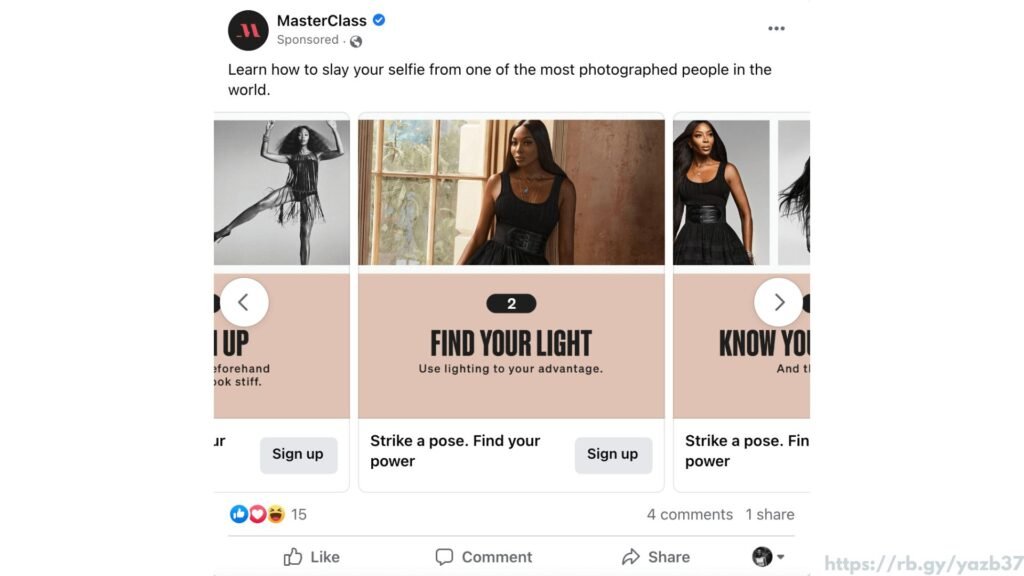
Strategy: Utilize AI to dynamically customize Carousel ad content based on the viewer’s past interactions and preferences. This approach ensures that each user sees the most relevant and appealing products.
Implementation: Implement machine learning algorithms to analyze user data and automatically adjust the Carousel content to match individual preferences.
Futuristic Impact: Tailoring ads at an individual level could significantly boost engagement and conversion rates, as ads become increasingly relevant to each user.
Example: Netflix has the potential to leverage AI in crafting Carousel ads that are customized for each viewer, using their watch history to tailor content.
This approach could significantly enhance user engagement by displaying cards that resonate with individual preferences.
Such personalized recommendations could effectively boost interest in upcoming shows.
#3. Voice-Activated Carousel Navigation
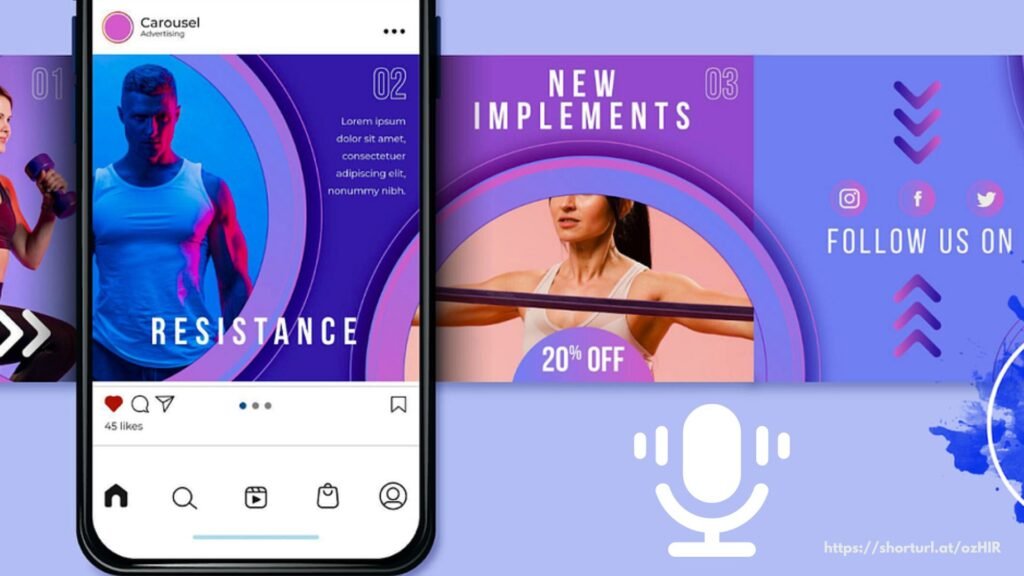
Strategy: Incorporate voice recognition into Carousel ads, allowing users to navigate through the Carousel using voice commands. This feature caters to the growing use of voice search and commands in digital interfaces.
Implementation: Integrate voice recognition technology that responds to commands like “next” or “show me more,” making the ad interaction hands-free and accessible.
Futuristic Impact: Voice-activated navigation could enhance user experience and accessibility, potentially increasing the time spent interacting with Carousel ads.
Example: Spotify could implement voice-activated navigation in its Carousel ads. This lets users explore different music playlists or podcast recommendations hands-free, enhancing the user experience on mobile devices.
#4. Blockchain for Transparency and Trust
Strategy: Use blockchain technology to provide verifiable transparency in Carousel ads, particularly for products with sustainability claims or complex supply chains.
Implementation: Each Carousel card could include a blockchain-verified badge or link to detailed product origins, production processes, or authenticity certificates.
Futuristic Impact: Leveraging blockchain could elevate brand trust and credibility, particularly among eco-conscious and discerning consumers, leading to higher engagement and loyalty.
Example: Patagonia could incorporate blockchain verification in its Carousel ads to highlight the sustainable and ethical sourcing of materials for its outdoor clothing line, building consumer trust through transparency.
#5. Interactive Storytelling with Gamification
Strategy: Transform Carousel ads into interactive storytelling experiences with gamified elements, encouraging users to engage with each card as part of a larger narrative or challenge.
Implementation: Design Carousel ads where each card represents a piece of a story or puzzle. Users could unlock discounts or offers by engaging with the entire Carousel.
Futuristic Impact: Gamification can significantly increase user engagement and time spent on ads, turning ad interaction into an enjoyable activity that rewards users.
Example: Adidas could create a gamified Carousel ad campaign where users follow an athlete’s journey, unlocking training tips and exclusive discounts as they engage with each card, making ad interaction more engaging.
#6. Predictive Analytics for Forecasting Trends
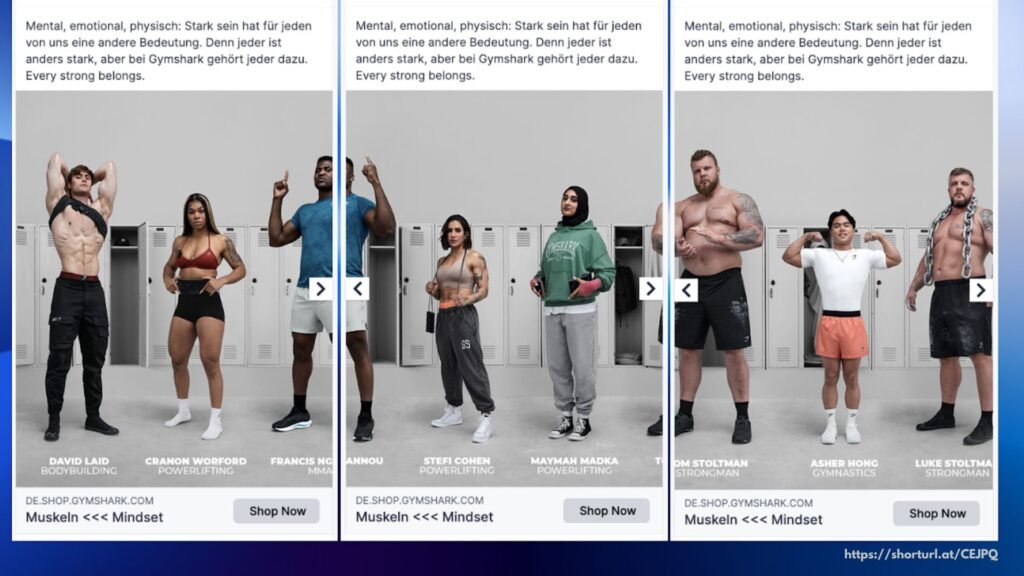
Strategy: Employ predictive analytics to forecast upcoming trends and dynamically adjust Carousel ad content to showcase products before they become widely popular.
Implementation: Use data analysis tools to predict trends and automatically update Carousel ads with trending products, ensuring your brand stays ahead of the curve.
Futuristic Impact: Being a trendsetter can position your Shopify store as a go-to destination for the latest products. It could drive traffic and conversions by capitalizing on emerging trends.
Example: Sephora could use predictive analytics to feature upcoming beauty trends and products in its Carousel ads before they hit peak popularity, positioning itself as a trendsetter in the beauty industry.
#7. Cross-Platform Carousel Integration

Strategy: Extend the reach of Carousel ads beyond Facebook to other platforms, creating a seamless cross-platform advertising experience that follows users across their digital journey.
Implementation: Develop integrated advertising campaigns where Carousel ads on Facebook trigger complementary ads on other platforms, maintaining narrative and visual consistency.
Futuristic Impact: Cross-platform integration can amplify ad reach and effectiveness, providing a cohesive brand experience that engages users across multiple touchpoints.
Example: Disney could create a Carousel ad campaign for a new movie release on Facebook that triggers complementary ads on Instagram and YouTube, providing a seamless storytelling experience across platforms.
#8. Integration with IoT Devices
Strategy: Connect Carousel ads with Internet of Things (IoT) devices to offer users real-time, personalized experiences based on their current environment or device usage.
Implementation: Design Carousel ads that interact with smart home devices. An ad for a product could trigger a special discount directly to the user when their smart device detects a low supply of that product.
Futuristic Impact: This strategy can lead to highly personalized and timely ad experiences, increasing the relevance and effectiveness of the ads. It bridges digital advertising with physical realities, enhancing user engagement.
Example: Nespresso could design Carousel ads that interact with users’ smart coffee machines. This could be done by offering special discounts or reminding them to reorder capsules when their supply runs low.
This therefore personalizes the shopping experience.
#9. Utilizing 5G for Enhanced Ad Experiences
Strategy: Leverage the speed and low latency of 5G technology to create richer, more complex Carousel ad experiences that were previously not possible due to bandwidth limitations.
Implementation: Develop high-definition video Carousels or interactive 3D models that load instantly on 5G connections. It offers a seamless and immersive experience.
Futuristic Impact: With 5G, Carousel ads can become more engaging and interactive. It can offer experiences that captivate users and drive higher engagement rates without the frustration of slow loading times.
Example: Sony could leverage 5G to create immersive video Carousel ads for its latest PlayStation games. It offers high-definition trailers that load instantly, captivating gamers with seamless, high-quality visuals.
10. Sustainable and Ethical Ad Highlighting
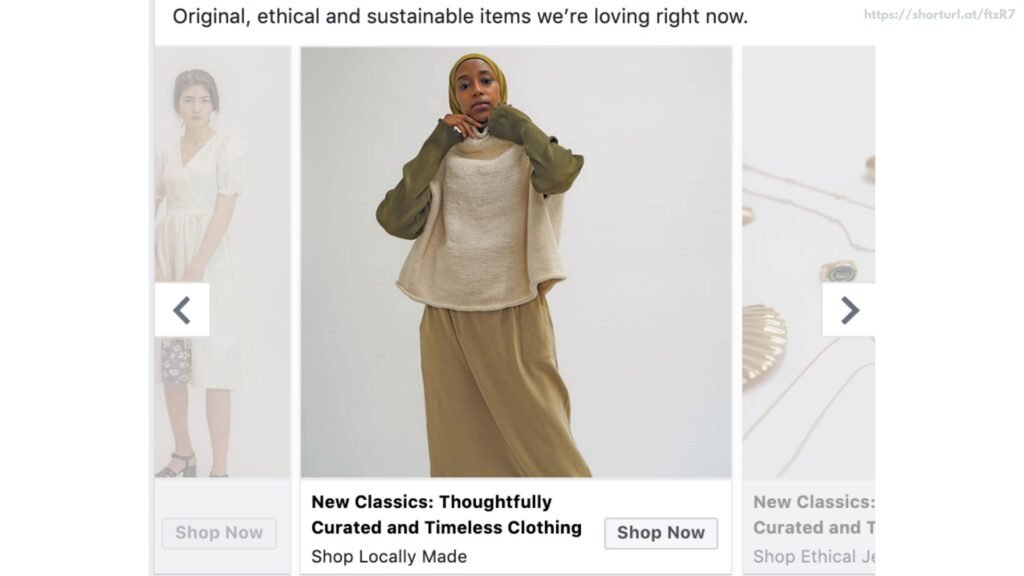
Strategy: Focus on sustainability and ethical practices in your Carousel ads, appealing to the growing consumer demand for responsible brands.
Implementation: Use Carousel ads to tell the story of your brand’s commitment to sustainability, from ethically sourced materials to eco-friendly manufacturing processes. Each card can highlight a different aspect of your brand’s sustainability journey.
Futuristic Impact: This strategy not only enhances brand image and customer loyalty but also meets the increasing consumer demand for transparency and sustainability. It will potentially increase market share among environmentally conscious consumers.
Example: Lush Cosmetics could use Carousel ads to detail the journey of its ethically sourced ingredients and zero-waste packaging initiatives. It will be appealing to environmentally conscious consumers by showcasing its commitment to sustainability.
Combining these ten strategies provides Shopify store owners with a comprehensive toolkit for leveraging Facebook Carousel Ads in the futuristic landscape of 2024.
From leveraging AR and AI for personalized experiences to embracing 5G and IoT for seamless and engaging ads, these strategies are designed to keep your brand at the forefront of digital marketing innovation.
Conclusion
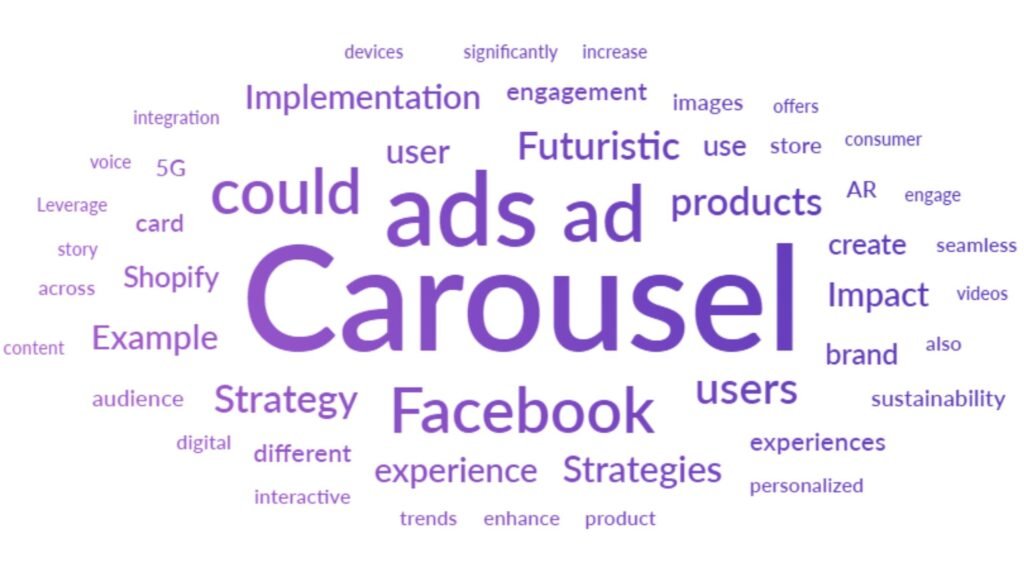
By strategically implementing Facebook Carousel Ad Strategies, Shopify store owners can enhance their online presence. They can also engage more deeply with their target audience, and drive sales.
These strategies, combined with compelling visuals and targeted messaging, form a powerful toolkit for maximizing the effectiveness of your Facebook advertising campaigns.
FAQs
1. How do I start creating a Facebook Carousel Ad?
To create a Facebook Carousel Ad, go to Facebook Ads Manager. Click “Create,” choose an objective that supports Carousel Ads (like ‘Traffic’ or ‘Conversions’), and select “Carousel” as your ad format. Then, add your images or videos, text, and links for each card.
2. What are the best practices for selecting images or videos for my Facebook Carousel Ad Strategies?
Use high-quality, cohesive images or videos that tell a story. Ensure consistency in visual style across all cards and optimize for mobile viewing.
3. Can I use Facebook Carousel Ads for services, or are they only effective for physical products?
Facebook Carousel Ads work well for both services and physical products. Highlight different aspects or benefits of your service, customer testimonials, or available packages across the carousel cards.
4. What should I do if my Facebook Carousel Ad isn’t performing well?
If your Facebook Carousel Ad under-performs, consider testing different images, headlines, or call-to-action buttons. Also, review your targeting settings to ensure you’re reaching the right audience.
A/B testing can help identify which elements resonate best with your audience.
5. Can I target specific segments of my audience with different Facebook Carousel Ad Strategies?
Yes, Facebook’s advanced targeting options allow you to create personalized ads for specific audience segments. It’s based on demographics, interests, and behaviors, improving ad relevance and performance.
Written by Sarah Joshi from Trigacy. The images have copyrights from their respective sources

